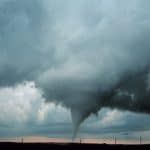Who’s in charge during the swine flu crisis?
By Laura H. Kahn | April 29, 2009
As the swine flu crisis worsens, effective disease control will require political and public health leadership at the federal, state, and local levels. Like the deadly influenza virus of 1918 that took more lives than World War I, this latest virus is an H1N1 strain and has the potential to develop into a major pandemic. Already, the virus has infected more than 150 people in Mexico and has spread to New York City and other parts of the United States. The first U.S. death was just reported in a child in Texas.
In previous crises, the relationship between political and public health leadership was an important factor in controlling disease spread. During the 1947 New York City smallpox outbreak, city officials presented a model of leadership. Similar to the present crisis, the smallpox outbreak began with a traveler returning from Mexico. As the disease spread, New York City mayor William O’Dwyer delegated decision making to Israel Weinstein, the commissioner of health. Weinstein made the programmatic decisions while the mayor provided political support. In less than a month, the health department and its many volunteers had vaccinated approximately 6 million people. In the end, 12 people came down with smallpox, and 2 died. Although there were considerable problems with the mass vaccination campaign, including approximately 46 cases of encephalitis and 8 deaths, the response was hailed a success.
In contrast, U.S. officials’ stumbling response to the 2001 anthrax crisis exemplifies leadership failures.
How will the U.S. fare in this new crisis? In New York City, Mayor Michael Bloomberg is “in charge.” New York City currently has 45 confirmed cases of swine flu–the most confirmed cases in the United States. The outbreak appears to have begun after students at the St. Francis Preparatory School in Fresh Meadows, Queens, returned from a trip to Mexico.
If the virus spreads, the mayor and his appointees will have to decide whether further actions are necessary, such as closing schools, implementing quarantine (separating potentially exposed individuals from other healthy individuals), and isolation (separating the sick from the healthy). They might also have to decide if people at risk should receive prophylactic anti-viral medications and, if available, an effective vaccine.
While New York City is lucky to have a competent and prepared mayor and health department, many cities around the country are unlikely to be so fortunate. In New Jersey, for example, the overlapping hodgepodge of township and borough governments generally leads to poorly defined chains of command and weakened public health capabilities.
Ultimately, these elected officials at the local, state, and federal level are “in charge.” However, there is no data on how many mayors (or comparable elected officials) have prepared for crises such as epidemics. Federal bioterrorism spending was supposed to improve state and local public health capabilities; however, a 2008 Trust for America’s Health Report analyzing the nation’s public health preparedness found that federal funding for state and local public health preparedness efforts was cut 25 percent since 2005. The current economic crisis and partisan politics has exacerbated the situation.
Only because of this crisis did the U.S. Senate approve President Barack Obama’s choice for secretary of the Department of Health and Human Services. Yet, 100 days into Obama’s term, the Center for Disease Control and Prevention (CDC) still lacks a permanent director and many other top health positions remain unfilled. In their absence, Janet Napolitano, the secretary of the Department of Homeland Security and an acting CDC director were filling the vacuum. However, the chain of command under this arrangement is discontinuous and likely to lead to confusion.
While I hope this outbreak will be limited, if the crisis reaches the level of the 1918 pandemic it is likely to cause major civil disruption. Ultimately, Obama must provide national leadership along the lines of Mexican President Felipe Calderon, who has assumed new powers to isolate people infected with the virus.
At the local level, elected officials must be quickly educated on their roles and responsibilities during an epidemic. The National League of Cities has just started a crisis leadership training program for elected officials thanks to a grant from the Department of Homeland Security, but it is still in the pilot stages. This, or an analogous program, needs to be ramped up to get local elected officials up to speed on how to prepare and respond to a deadly influenza epidemic.
The time is now for local elected and public health officials to prepare for the worst-case scenario. They need to develop relationships with local experts and know who to turn to for help. The development of clear chains of command and quick actions will save lives during this and future crises.
Together, we make the world safer.
The Bulletin elevates expert voices above the noise. But as an independent nonprofit organization, our operations depend on the support of readers like you. Help us continue to deliver quality journalism that holds leaders accountable. Your support of our work at any level is important. In return, we promise our coverage will be understandable, influential, vigilant, solution-oriented, and fair-minded. Together we can make a difference.
Topics: Columnists














